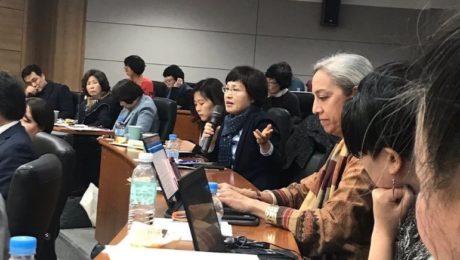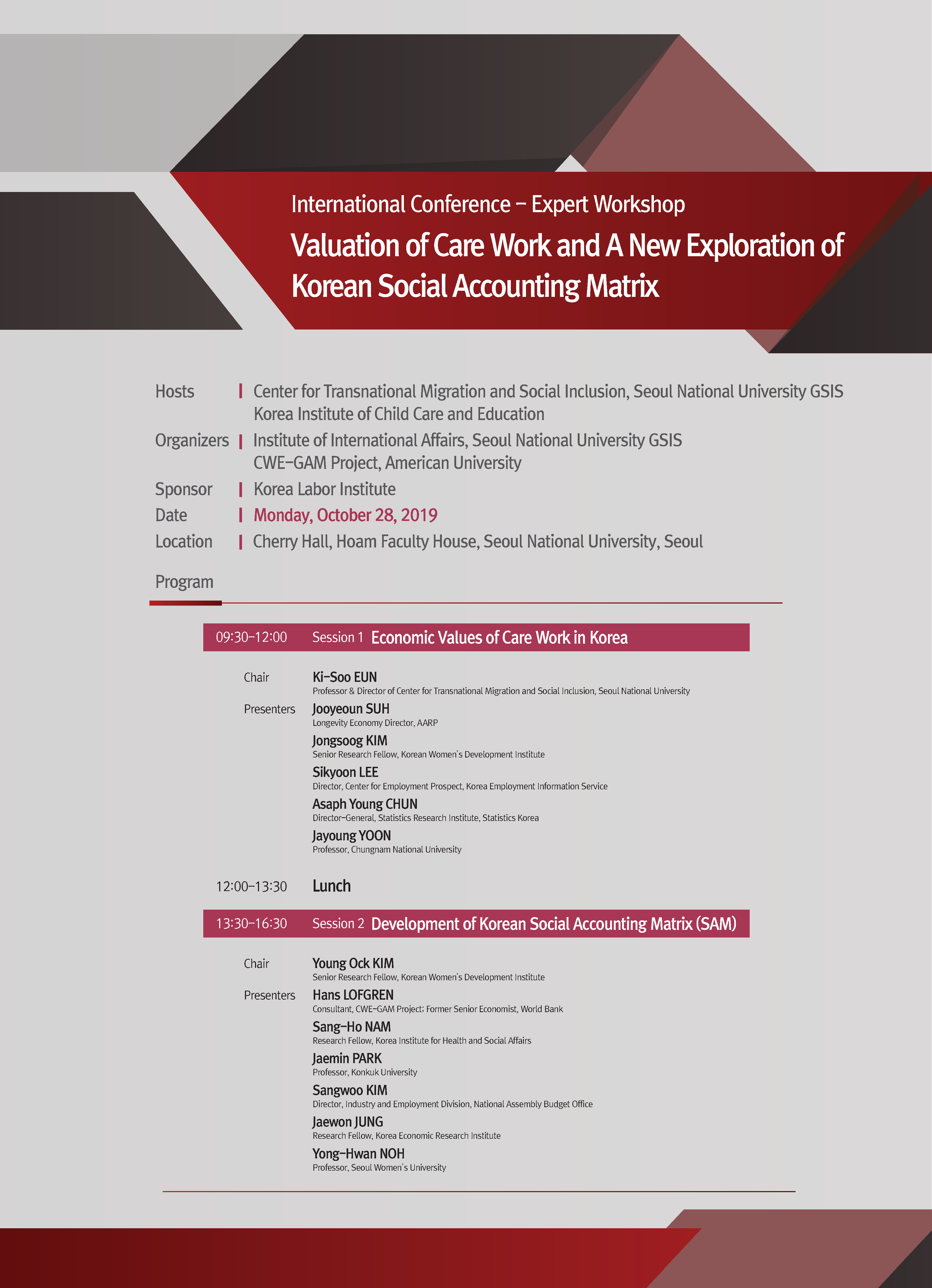Glimpse of Family Caregivers’ Context: Actual time vs. Desired time for Care
Attitudes towards family care are changing. Only 27% of Koreans surveyed in 2018 agreed that the family is responsible for elderly family member care. As for population aging, the middle age group of Korean society is becoming a true “Sandwiched Generation” (supporting both unmarried children and elderly parents) due to the longevity increase among elderly parents and postponement of marriage among the young generation. In addition, caring for grandchildren by the young elderly group is becoming more prevalent as the number of employed married women has increased in recent decades. To respond to this family burden, Long Term Care Insurance for the Elderly (LTCI) has been expanded since 2008. Statistics of the LTCI program show a stiff increase in care provision for supporting the daily lives of elderly who suffer from physical and mental ailments.
Cha & Moon (2019) investigate the nature of family care in the context of expanding public care provision. Using the 2018 Family Survey for Child and Elder Care, the authors assess the role of family care and how family members take part in the changing elderly care process. Family caregivers spend, on average, about 8 hours a day providing care to elderly family members on caring days, or about 50 hours a week. However, the average preferred number of hours for care is 24 hours per week, almost half of the actual care hours. Those who are classified as mildly or severely over-caring tend to live with their elderly family member, partly because the elder family member has a severe limitation in their Activities of Daily Living (ADL) and is unlikely to spend more than 3 hours per day alone.
On the other hand, care givers whose hours matched their desired hours are relatively young and the employment rate is higher than among other types. Compared to this matched case, over-caring is more common when attentiveness is required, when the caregiver perceives the necessity to take on greater responsibility for the elderly care recipient, and when time consuming care tasks are needed to care for the elderly family member. The authors speculate that the different types of care arrangements—under-caring, matched, and over-caring—appear to represent the sequential process of elderly care, from making regular care-visits to constantly ‘being there’ next to the recipient.
This paper will be available December 2019.
Family Caregivers’ Elder Care: Understanding Their Hard Time and Care Burden
In response to the imminent aging problem in South Korea, the National Long-Term Care Insurance (NLTCI) system was introduced in 2008. The goal of the NLTCI was to give support to the families who are taking care of their elderly. The burden of family care can be grouped into four broad categories – unpaid and at home, paid and at home, paid and in facility, and unpaid visit of the family when care recipient is in facilities. Moon et al (2019) focus on the challenges faced by providers of unpaid care within families – unpaid care by family members is the most prevalent form of elderly care in Korean society.
Korean’s attitudes or thoughts on the family care responsibility of their old parents have changed surprisingly as time passed. In 1998, 89.9% of Koreans agreed with the idea that the care responsibility of their old parents belongs to the family. In 2014, the figure dropped to about a third of the population – only 34.1% of surveyed adults agreed to share the responsibility. The authors take this trend and generational gap as the departure point for their qualitative analysis of the difficulties faced by caregivers, with a view that there might be a clash or inconsistency in the care behaviors of the family members or in their ways of thinking on elderly care.
Using a combination of oral history and in-depth interviews, Moon et al (2019) shed light on the increasing burden of labor force participation and aging parents and in-laws on Korean women. Many elderly persons need attention and care continuously for 24 hours – in this regard the public care service providers provide limited relief as they work for only three hours at a time. In addition to the public-private and paid-unpaid differences in the burden of care, the authors draw attention to the difficulty of deciding who in the family takes up the responsibility. In many cases, the traditional caretaker roles fulfilled by the daughters-in-law have shifted to the daughters of the elderly. Social norms also contributed to the disproportionate caretaking burden borne by women.
- Published in South Korea, Understanding and Measuring Care




